Endorsements
Advisors and Interviewees
Our distinguished advisors and interviewees include the following esteemed experts.
Jhado Rinpoche
Abbot, Namgyal Monastery
 Jhado Rinpoche (Tenzin Jungne), along with the Dalai Lama, is regarded to be among the world’s leading authorities on the Kalachakra Tantra. He was born in 1954 to a nomadic family living in the area of Namtso Lake, 220 kilometers north of Lhasa, Tibet. At the age of three he was recognized and enthroned as the 6th incarnation of the abbot of Jhado Monastery.
Jhado Rinpoche (Tenzin Jungne), along with the Dalai Lama, is regarded to be among the world’s leading authorities on the Kalachakra Tantra. He was born in 1954 to a nomadic family living in the area of Namtso Lake, 220 kilometers north of Lhasa, Tibet. At the age of three he was recognized and enthroned as the 6th incarnation of the abbot of Jhado Monastery.
From 1992 until 1996, Rinpoche served as a teacher at Namgyal Monastery in Dharamsala, the personal monastery of His Holiness the Dalai Lama. In 1997, Rinpoche was appointed to the post of Abbot of Namgyal Monastery, and served the institution in that capacity until 2004. Jhado Tulku Rinpoche is one of the most highly esteemed lamas in the Geluk lineage today. In addition to his excellent education in the Geluk monastic college system, over the years Rinpoche has also received many oral transmissions and empowerments from His Holiness the Dalai Lama and his two main tutors, as well as from many great teachers from other traditions, including the famous Nyingma master Trulshik Rinpoche and Chogye Trichen Rinpoche. Renowned for his keen intelligence and dynamic teaching style, Jhado Rinpoche is also highly acclaimed for his ability to engage Western students in ways that are interesting and personally relevant. In addition to these qualities, Rinpoche is also well known and loved for his gentle demeanor and his kindness. In our recent meeting with Ed Bastian, he offered the following: “I will do everything I can to help and support this project.”
Jeffrey Hopkins
President, UMA Institute for Tibetan Studies
Author: “The Kālachakra Tantra Rite of Initiation”
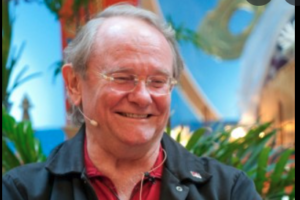 I heartily accept your invitation to participate as an advisor and interviewee in your project to present the meaning and purpose of the Buddhist Tantras, the uniqueness of Kālachakra in the context of classical Buddhism, the purpose and symbology of each of the seven Generation Stage initiations, and the impact of the Dalai Lama and Kālachakra on the global spread of Buddhism and advancement of world peace. His Holiness the Dalai Lama taught me the ritual for the Generation Stage by Khay-drub Ge-leg-pal-sang in Dharmsala in preparation for my translating the text and serving as interpreter during the event at the Deer Park Buddhist Center near Madison, Wisconsin. Subsequently, I retranslated His Holiness the Dalai Lama’s extensive explanation during the ritual and added it to the ritual and produced a book published by Wisdom Publications titled The Kālachakra Tantra: Rite of Initiation for the Stage of Generation in 511 pages that was distributed at the initiation in Switzerland in 1985 and in turn was translated into several languages. Thus, the event in Wisconsin was seminal in this way also.
I heartily accept your invitation to participate as an advisor and interviewee in your project to present the meaning and purpose of the Buddhist Tantras, the uniqueness of Kālachakra in the context of classical Buddhism, the purpose and symbology of each of the seven Generation Stage initiations, and the impact of the Dalai Lama and Kālachakra on the global spread of Buddhism and advancement of world peace. His Holiness the Dalai Lama taught me the ritual for the Generation Stage by Khay-drub Ge-leg-pal-sang in Dharmsala in preparation for my translating the text and serving as interpreter during the event at the Deer Park Buddhist Center near Madison, Wisconsin. Subsequently, I retranslated His Holiness the Dalai Lama’s extensive explanation during the ritual and added it to the ritual and produced a book published by Wisdom Publications titled The Kālachakra Tantra: Rite of Initiation for the Stage of Generation in 511 pages that was distributed at the initiation in Switzerland in 1985 and in turn was translated into several languages. Thus, the event in Wisconsin was seminal in this way also.
Sincerely,
Jeffrey
Paul Jeffrey Hopkins
President. UMA Institute for Tibetan Studies
Emeritus Professor of Tibetan Studies,
UVA
Robert Thurman
Jey Tsong Khapa Professor Emeritus of Indo-Tibetan Buddhological Studies,
Columbia University
Editor-in Chief, “The Glorious Kālachakra King of Tantras”
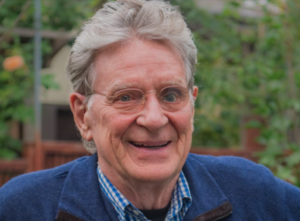 I hereby accept enthusiastically your invitation to participate as an advisor and interviewee in your project to present the meaning of the Buddhist Tantras, the uniqueness of Kālachakra in the context of the classical Buddhist movement in India and Tibet, and the purpose of the Dalai Lama’s widespread teaching and frequent conferral of the Grand Ceremony of the Kālachakra during this time of the tragic Tibetan exile and diaspora and the many other global emergencies, assisting the worldwide spread of a more hopeful and enlightened consciousness in all spiritual and even secular humanist traditions and in the advancement of world peace.
I hereby accept enthusiastically your invitation to participate as an advisor and interviewee in your project to present the meaning of the Buddhist Tantras, the uniqueness of Kālachakra in the context of the classical Buddhist movement in India and Tibet, and the purpose of the Dalai Lama’s widespread teaching and frequent conferral of the Grand Ceremony of the Kālachakra during this time of the tragic Tibetan exile and diaspora and the many other global emergencies, assisting the worldwide spread of a more hopeful and enlightened consciousness in all spiritual and even secular humanist traditions and in the advancement of world peace.
I will do my best to help your project demonstrate the positive motivation and practical wisdom embodied in the distinctive Kālachakra psychological and environmental sciences and artistic aesthetic, and thus how, rather than just being a cultic performance, the ceremony and practices enabled do have a beneficial effect on people who may not be Buddhist but may still be inspired to turn their lives toward higher purposes.
Sincerely yours,
Robert A. F. Thurman,
Jey Tsong Khapa Professor Emeritus of Indo-Tibetan Buddhological Studies,
Columbia University
President, Tibet House US
Vesna Wallace
Professor of Religious Studies, UC Santa Barbara
Author: “The Kālacakratantra: The Chapter on Sādhana together with the Vimalaprabhā“
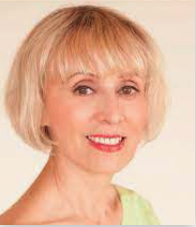 I am writing this letter to confirm that I will be happy to contribute as an advisor and interviewee to the documentary film on the historic 1981 Kālachakra tantric initiation that was held in Madison, which is being produced by Dr. Ed Bastian and his team. The Kālachakra tantric tradition has been one of the two major areas of my research and publications. I believe that this documentary film will greatly contribute to our understanding of the history of Tibetan Buddhism in the U.S.
I am writing this letter to confirm that I will be happy to contribute as an advisor and interviewee to the documentary film on the historic 1981 Kālachakra tantric initiation that was held in Madison, which is being produced by Dr. Ed Bastian and his team. The Kālachakra tantric tradition has been one of the two major areas of my research and publications. I believe that this documentary film will greatly contribute to our understanding of the history of Tibetan Buddhism in the U.S.
Sincerely,
Vesna A. Wallace
Professor of Religious Studies
Arjia Rinpoche
Former Abbot
Kumbum Monastery
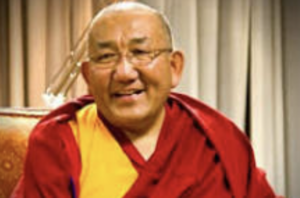 Arjia Rinpoche was the Abbot of Kumbum Monastery, one of the six great centers of Buddhism in Tibet. He left Tibet in 1998 because of the repression of Tibetan culture and religion. He now lives in the United States where he remains devoted to his work as a scholar and teacher. In the year 2000, the Rinpoche established The Tibetan Center for Compassion and Wisdom (TCCW) to preserve and celebrate Tibetan language, arts, and to advance understanding of Tibetan Buddhism in the West. He is a renowned expert on the Kalachakra and his advice is extremely important for our film and the 3D animation of the Mandala Palace.
Arjia Rinpoche was the Abbot of Kumbum Monastery, one of the six great centers of Buddhism in Tibet. He left Tibet in 1998 because of the repression of Tibetan culture and religion. He now lives in the United States where he remains devoted to his work as a scholar and teacher. In the year 2000, the Rinpoche established The Tibetan Center for Compassion and Wisdom (TCCW) to preserve and celebrate Tibetan language, arts, and to advance understanding of Tibetan Buddhism in the West. He is a renowned expert on the Kalachakra and his advice is extremely important for our film and the 3D animation of the Mandala Palace.
Sharpa Tulku (Tenzin Trinley)
Author, Translator and Co-Producer
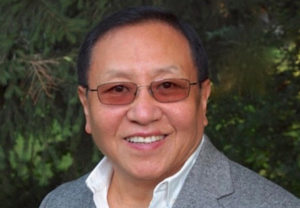 I am serving as a co-producer and translator for this film and served as a bridge between Tibetan experts at Namgyal Monastery as well as with His Holiness the Dalai Lama. I can attest to the scholarly accuracy of this film’s portrayal of the ancient wisdom and methods ot the Kālachakra Tantra and of Tibetan Buddhism philosophy and practice.
I am serving as a co-producer and translator for this film and served as a bridge between Tibetan experts at Namgyal Monastery as well as with His Holiness the Dalai Lama. I can attest to the scholarly accuracy of this film’s portrayal of the ancient wisdom and methods ot the Kālachakra Tantra and of Tibetan Buddhism philosophy and practice.
It has been a great pleasure working on the Kālachakra Film Project at various stages of the production and eagerly look forward to the completion of the film to share the fruits and benefits with the wider audience.
Sharpa Tulku
Jan Willis
Professor of Religion, Wesleyan University
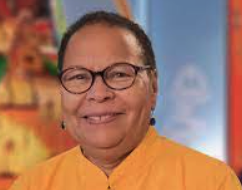 Thank you for the invitation to serve as an Advisor and possible Interviewee for your project to make a documentary film about the Kalacakra Empowerment given by His Holiness the Dalai Lama—for the first time ever in the West—in Madison, Wisconsin in 1981.
Thank you for the invitation to serve as an Advisor and possible Interviewee for your project to make a documentary film about the Kalacakra Empowerment given by His Holiness the Dalai Lama—for the first time ever in the West—in Madison, Wisconsin in 1981.
It was my great good fortune to attend that event, and I would be delighted to assist you in whatever way I can in making the prospect of this important film a reality.
Jan Willis, PhD
Professor of Religion, Emerita at Wesleyan University
Jose Cabezon
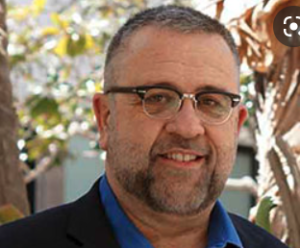 Dalai Lama Professor of Tibetan Buddhism, UC-Santa Barbara
Dalai Lama Professor of Tibetan Buddhism, UC-Santa Barbara
President Emeritus, American Academy of Religion
I was delighted to hear that the film on the Kalachakra is moving forward. As a participant in the Kalachakra initiation in Madison in 1981, I know the importance of that watershed event for the history of Buddhism in the United States and I am thrilled to contribute to it in whatever way I can.
With this letter I confirm my willingness to serve as an advisor and interviewee for the film.
Thank you for your leadership role in this vital archival work, and for your commitment to making this important event in the history of Buddhism available to the general public.
José I. Cabezón
Dalai Lama Professor of Tibetan Buddhism and Cultural Studies
President Emeritus, American Academy of Religion
Yangsi Rinpoche
President, Maitripa College
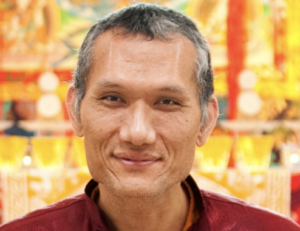 Yangsi Rinpoche is President of Maitripa College which is among the world’s authentic Buddhist studies institutions. He was recognized as the reincarnation of Geshe Ngawang Gendun, a renowned scholar and practitioner from Western Tibet, at the age of six. Rinpoche trained in the traditional monastic system for over 25 years, and practiced as a monk until the age of 35.
Yangsi Rinpoche is President of Maitripa College which is among the world’s authentic Buddhist studies institutions. He was recognized as the reincarnation of Geshe Ngawang Gendun, a renowned scholar and practitioner from Western Tibet, at the age of six. Rinpoche trained in the traditional monastic system for over 25 years, and practiced as a monk until the age of 35.
In 1995 he graduated with the highest degree of Geshe Lharampa from Sera Je Monastery in South India. He then completed his studies at Gyume Tantric College, and, in 1998, having the particular wish to benefit Western students of the Buddhadharma, Rinpoche came to the West to teach and travel extensively throughout America and Europe.
Rinpoche served as a resident teacher at Deer Park Buddhist Center (Madison, Wisconsin) for five years, and is currently the Spiritual Director of Ganden Shedrup Ling Buddhist Center (San Juan, Puerto Rico), Dharma Friendship Foundation (Seattle, Washington), and Tara Buddhist Center (Nashville, Tennessee).
Practicing the Path: A Commentary on the Lamrim Chenmo, published in 2003 by Wisdom Publications.
Rinpoche teaches in English, and is admired wherever he travels for his unique presentation of the Dharma, his interest in and enthusiasm for Western culture, and his evident embodiment of the wisdom and compassion of the Buddhist path.
When not in the classroom at Maitripa College, during academic year breaks and for special events, Yangsi Rinpoche travels widely, representing Maitripa College at conferences and giving teachings around the world.
Gavin Kilty
Translator of Kalachakra and Tantra Texts
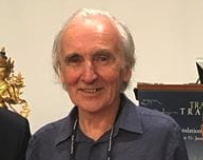 Gavin Kilty is a distinguished and revered translator of original Sutra and Tantra texts including “Mirror of Bery: A Historical Introduction to Tibetan Medicine,” l”The Splendor of an Autumn Moon: Devotional Verse of Tsongkhapa,” and “Ornament of Stainless Light: An Exposition of the Kalachakra Tantra.” He studied Tibetan Tibetan language and Buddhism for thirteen years in Dharamsala, including eight years at the Institute of Buddhist Dialectics. His deep understanding of the Kalachakra Generation and Completion Stage practices, Cosmology and Madhyamaka will help guide these elements of our film.
Gavin Kilty is a distinguished and revered translator of original Sutra and Tantra texts including “Mirror of Bery: A Historical Introduction to Tibetan Medicine,” l”The Splendor of an Autumn Moon: Devotional Verse of Tsongkhapa,” and “Ornament of Stainless Light: An Exposition of the Kalachakra Tantra.” He studied Tibetan Tibetan language and Buddhism for thirteen years in Dharamsala, including eight years at the Institute of Buddhist Dialectics. His deep understanding of the Kalachakra Generation and Completion Stage practices, Cosmology and Madhyamaka will help guide these elements of our film.
Venerable Lama Losang Samten
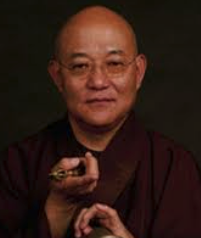 Ven. Losang Samten has been sharing teachings of loving-kindness, joy and compassion, as well as the path to enlightenment for almost 30 years. Losang lived and studied over 20 years in the Namgyal Monastery (the monastery of His Holiness the Dalai Lama) earning the highest degree attainable at the monastery, equivalent to a doctoral degree in the West. He also became a Master of Ritual Dance and Sand Mandalas and was the Personal Attendant to His Holiness the XIV Dalai Lama prior to moving to the United States in 1988. Ven. Losang Samten is one of the Mandala Masters who created the first public sand mandala in the West in 1988. He is the spiritual director of several Buddhist Centers in North America, with a home base currently in Philadelphia, Pennsylvania – the City of Brotherly Love. Ven. Losang Samten has led an illustrious career creating sacred sand mandalas that follow the ancient Buddhist tradition
Ven. Losang Samten has been sharing teachings of loving-kindness, joy and compassion, as well as the path to enlightenment for almost 30 years. Losang lived and studied over 20 years in the Namgyal Monastery (the monastery of His Holiness the Dalai Lama) earning the highest degree attainable at the monastery, equivalent to a doctoral degree in the West. He also became a Master of Ritual Dance and Sand Mandalas and was the Personal Attendant to His Holiness the XIV Dalai Lama prior to moving to the United States in 1988. Ven. Losang Samten is one of the Mandala Masters who created the first public sand mandala in the West in 1988. He is the spiritual director of several Buddhist Centers in North America, with a home base currently in Philadelphia, Pennsylvania – the City of Brotherly Love. Ven. Losang Samten has led an illustrious career creating sacred sand mandalas that follow the ancient Buddhist tradition
Laura Harrington
Senior Lecture, Boston College, Department of Religion
Editor, “Kālachakra”
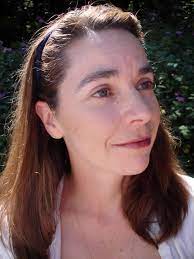 It would be my pleasure and privilege to serve as an advisor and to be interviewed for your film “The Dalai Lama’s Gift to the World – Wheel of Time – Kālachakra.” As my attached CV makes clear, my own scholarship on the Kālachakra Tantra tradition dates back more than twenty years, and spans journal articles, book chapters, textual translations and public presentations. I would welcome an opportunity to contribute my expertise to your remarkable film.
It would be my pleasure and privilege to serve as an advisor and to be interviewed for your film “The Dalai Lama’s Gift to the World – Wheel of Time – Kālachakra.” As my attached CV makes clear, my own scholarship on the Kālachakra Tantra tradition dates back more than twenty years, and spans journal articles, book chapters, textual translations and public presentations. I would welcome an opportunity to contribute my expertise to your remarkable film.
I believe your project will be a ground-breaking contribution to Tibetan and Buddhist studies. Please keep me abreast of all developments and any way I might be of help.
Laura Harrington
Professor Roger Jackson
John W. Nason Professor of Asian Studies and Religion, Emeritus, Carleton College
Author: “The Wheel of Time: The Kālachakra in Context”
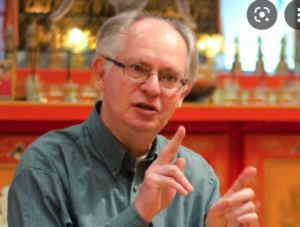 I am delighted to write in strong support of Dr. Edward W. (Ed) Bastian’s efforts to complete his long-in-the-works documentary film, The Wheel of Time: The Dalai Lama’s Gift to the World.
I am delighted to write in strong support of Dr. Edward W. (Ed) Bastian’s efforts to complete his long-in-the-works documentary film, The Wheel of Time: The Dalai Lama’s Gift to the World.
This extraordinary project documents the first Kālachakra (Wheel of Time) Buddhist empowerment ceremony ever held outside Asia. It was overseen by the Fourteenth Dalai Lama of Tibet, Tenzin Gyatso, who over the course of two weeks in the summer of 1981, conferred the empowerment upon a group of some 1200 students, most of them Westerners, at the edge of a cornfield outside Madison, Wisconsin. The Madison Kālachakra – organized by Geshe Sopa, a professor at the University of Wisconsin and abbot of Deer Park Buddhist Center – was a significant event in the transmission of the Buddha’s Dharma from Asia to the West, for by introducing in America one of the most complex and sophisticated systems of Buddhist philosophy, meditation, and ritual ever devised, the Dalai Lama signaled that Buddhism truly had become a global religion.
As someone who has studied and written on the Kālachakra, I can affirm with complete confidence that Ed has the directorial vision, the technical know-how, and the understanding of Buddhist traditions in general and the Kālachakra in particular to successfully complete the film he envisions, which will serve both to document the complex personalities and events that brought about an important moment in the transmission of Buddhism to the West and to expose modern audiences to the nuances and significance of the Kālachakra tradition, which is seen by the Dalai Lama not only as a vehicle for the transmission of Buddhism but also as a means of encouraging world peace and cross-cultural understanding – values he has consistently promoted throughout his life.
The entire event, from early preparations all the way through to the Dalai Lama’s departure following the empowerment, was filmed by Ed Bastian, who had earned a Buddhist Studies Ph.D. under Geshe Sopa at the University of Wisconsin and gone on to become a documentary filmmaker. Knowledgeably assisted by Sharpa Tulku, a high-ranking Tibetan reincarnate with expertise in both Tibetan Buddhism and various aspects of filmmaking, Ed accumulated thirty hours of footage, including a complete record of events leading up to and surrounding the event, the ceremony itself, and interviews with a number of participants, including Geshe Sopa and the Dalai Lama himself. Dr. Bastian is now seeking to complete the film, by digitizing and editing the film footage, conducting follow-up interviews, and shaping the documentary into final form.
For all these reasons, I consider The Wheel of Time: The Dalai Lama’s Gift to the World” to be a highly important film project, sure to be of interest to many people in the educated public in America and beyond, and urge that Dr. Bastian be given all the support, financial and otherwise, that he requires.
If I may provide further information on Dr. Bastian or his project, please don’t hesitate to contact me.
Sincerely yours,
Roger R. Jackson, Professor of Asian Studies and Religion, Carleton College
Daniel Aiken
CEO and Publisher, Wisdom Publications
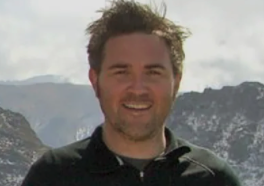 I write on behalf of Wisdom Publications in support of the Kālachakra film by Spiritual Paths Institute. This is an important record of the historic event of His Holiness the Dalai Lama bringing the Kālachakra to the West for the first time. The Kālachakra is an integral and profound part of the Tibetan Buddhist tradition and this film will be a valuable piece in preserving this part of Tibetan culture and Buddhist practice. Watching this film provides the powerful experience of immersing oneself in the historical importance of this unique event. From this vantage point, we are able to see the ways in which authentic Dharma has flourished in the United States and around the world from the efforts of His Holiness. Wisdom would be honored to have such a crucial film as part of our media library.
I write on behalf of Wisdom Publications in support of the Kālachakra film by Spiritual Paths Institute. This is an important record of the historic event of His Holiness the Dalai Lama bringing the Kālachakra to the West for the first time. The Kālachakra is an integral and profound part of the Tibetan Buddhist tradition and this film will be a valuable piece in preserving this part of Tibetan culture and Buddhist practice. Watching this film provides the powerful experience of immersing oneself in the historical importance of this unique event. From this vantage point, we are able to see the ways in which authentic Dharma has flourished in the United States and around the world from the efforts of His Holiness. Wisdom would be honored to have such a crucial film as part of our media library.
Daniel Aitken
John R. Newman
Professor of South Asian Studies, New College of Florida
Author: “Wheel of Time: Kalachakra in Context” and many articles
I write in support of the film project titled “The Dalai Lama’s Gift to the World -Wheel of Time – Kalachakra.” I attended the event the film will document and explore, and it was instrumental in inspiring me to pursue my academic study of the Buddhist tradition underlying the event, the Kalacakra tantra.
The Kalacakra, or “Wheel of Time,” is among the world’s great monuments of intellectual creativity. After its appearance in India it spread throughout much of Asia, leaving its mark on the cultures of Tibet, Mongolia, and China. Etic study of the tradition is still in its infancy, but enough progress has been made to reveal some of the vast store of riches it contains. The Kalacakra system of mysticism incorporates astronomy, physiology, medicine and a host of other topics within its spiritual practice. The proposed film project will be an important addition to wider knowledge of this tradition.
The Dalai Lama’s performance of the Kalacakra initiation rites in Wisconsin in 1981 was indeed a “gift to the world,” and I am honored to be invited to serve as a technical advisor for Dr. Edward Bastian’s project. Please feel free to contact me if I can offer any further information in support of the proposal.
John R. Newman
